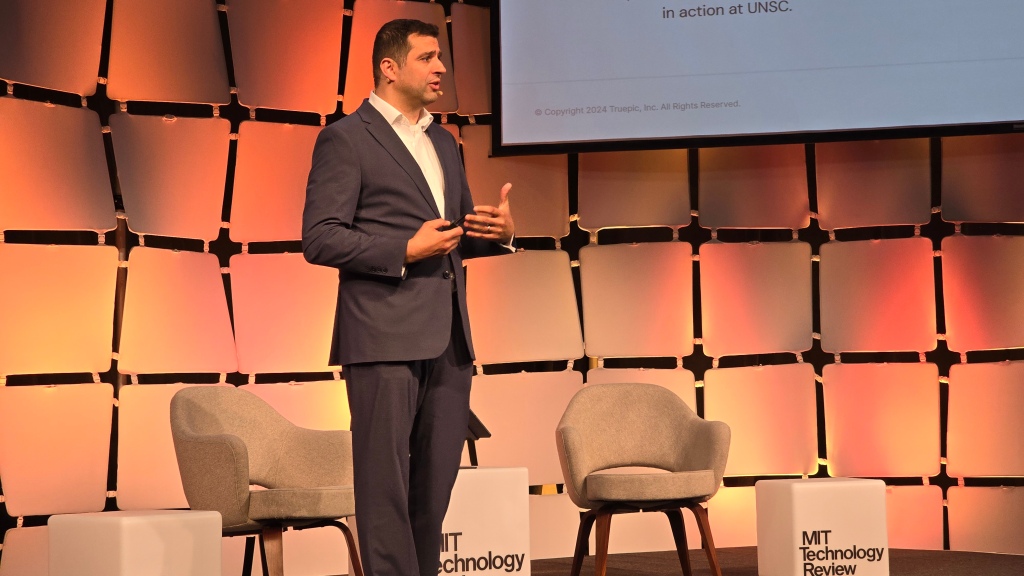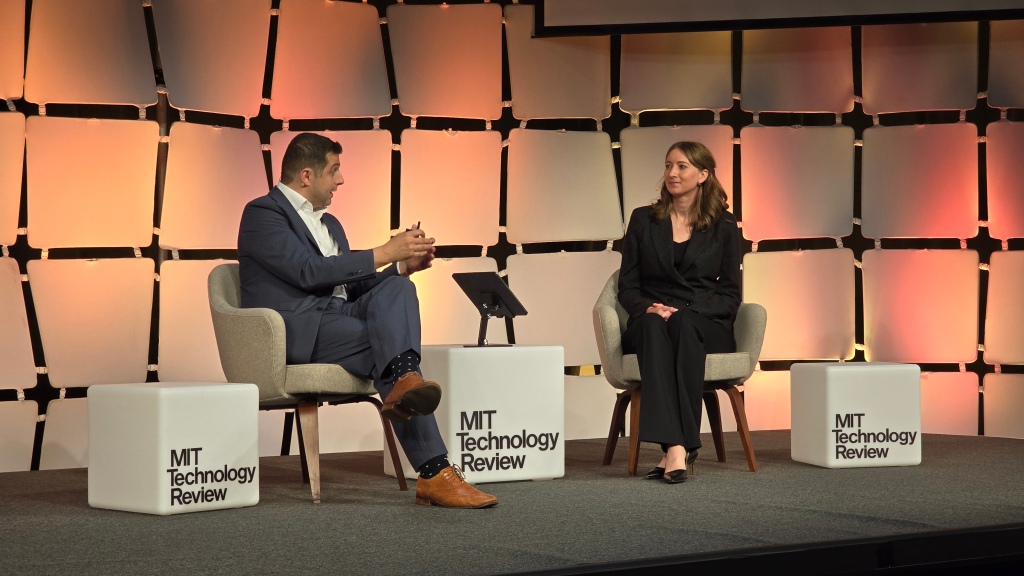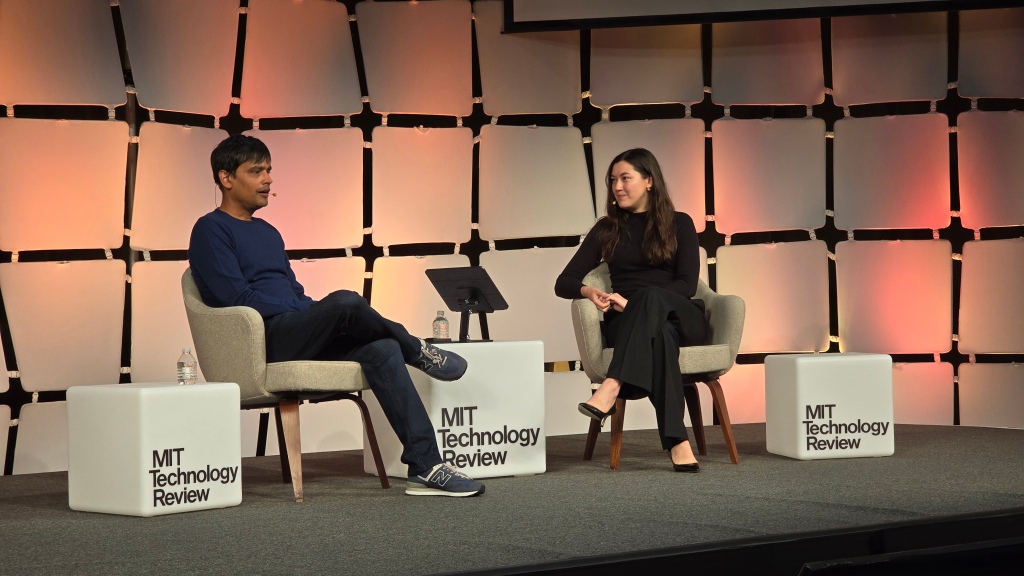In today’s digital age, the authenticity of online content is more critical than ever. With the rise of deepfakes, manipulated media, and synthetic content, ensuring the transparency and trustworthiness of what we see and hear online has become a paramount concern. Mounir Ibrahim, Executive Vice President of Public Affairs and Impact at Truepic, addressed this pressing issue in his session “Digital Content Authentication” at the recent MIT event. His insights offer a compelling glimpse into the future of digital content verification and the challenges that lie ahead.
From Diplomacy to Digital Authenticity
Mounir Ibrahim’s journey to the forefront of digital content authentication is as compelling as the topic itself. A former U.S. diplomat, Ibrahim’s experience in Syria during the Arab Spring and his tenure at the United Nations exposed him to the dire consequences of unverified digital content. He witnessed firsthand how images and videos from conflict zones were often dismissed as inauthentic, undermining their evidentiary value and allowing atrocities to go unchallenged.
This frustration fueled his drive to find a solution, leading him to Truepic, a company dedicated to ensuring the transparency and authenticity of digital content across the internet. Ibrahim’s transition from diplomacy to technology underscores the universal importance of digital content verification in various sectors, from government and media to everyday social interactions.
The Liar’s Dividend and the Need for Transparency
One of the most insidious challenges highlighted by Ibrahim is the “liar’s dividend” – the tactic of simply questioning the authenticity of genuine content to cast doubt and avoid accountability. This strategy has been effectively employed by bad actors to undermine trust in authentic media, creating a pervasive environment of skepticism.
Truepic’s mission is to combat this by establishing digital content provenance, a method to verify the origin and history of digital content. By ensuring that content can be traced back to its source, Truepic aims to restore trust in what we see and hear online.
The Role of C2PA in Setting Standards
Central to Truepic’s approach is its involvement in the Coalition for Content Provenance and Authenticity (C2PA). This standards body, founded by industry giants like Adobe, Microsoft, and Intel, aims to create interoperable specifications for digital content provenance. The recent addition of OpenAI to the C2PA steering committee highlights the growing recognition of the need for standardized content verification mechanisms.
The C2PA’s open specification allows for tamper-evident content that retains its provenance as it moves across different platforms. This interoperability is crucial in a digital landscape where content is constantly uploaded, downloaded, and shared across multiple channels.

Real-World Applications and Collaborations
Truepic’s technology is already being deployed in various real-world scenarios. For instance, the company has collaborated with Qualcomm to integrate content verification directly into smartphone chipsets. This integration ensures that content created on these devices can be authenticated from the moment of capture.
Moreover, Truepic has partnered with Microsoft to use this technology in Ukraine through Project Providence. This initiative documents the destruction of cultural heritage and infrastructure, ensuring that the evidence collected is authentic and tamper-proof. This application not only supports legal and historical records but also provides a reliable basis for prosecuting war crimes and other atrocities.
Another exciting development is Truepic’s work with open-source communities like Hugging Face. By integrating their standards with open-source models, they enable the generation of synthetic content that can still be verified for authenticity. This ensures that even AI-generated content can be trusted if it adheres to transparency standards.
Addressing the Challenges and Limitations
While digital content authentication technology represents a significant leap forward, it is not without limitations. Ibrahim candidly acknowledges that no system can completely eliminate bad actors. Some individuals or groups will always seek ways to circumvent verification processes. Additionally, because the system is designed to be interoperable, it is also inherently brittle—tamper evidence can be removed if the content is transferred to a non-compliant platform.
Despite these challenges, the increasing adoption of these standards by major platforms and organizations is a promising sign. As more browsers, OEMs, and social media platforms adopt these standards, the network effect will enhance the reliability and prevalence of authentic content.
Future Directions and Policy Implications
Looking ahead, Truepic and its partners continue to innovate. The C2PA specification is constantly evolving, with new versions expanding its capabilities to cover more types of media and more complex scenarios. The hope is that widespread adoption will drive improvements and innovations, making it more difficult for bad actors to manipulate content undetected.
Legislators around the world are also taking note. Governments in the United States, Europe, and Australia, as well as local authorities, are increasingly recognizing the importance of digital content transparency. This growing interest could lead to regulations that mandate the use of such technologies, further promoting a culture of authenticity online.
The Broader Ecosystem: Watermarking and Beyond
Beyond content credentials, other technologies like watermarking and fingerprinting also play a crucial role. Truepic’s collaboration with companies like Steg.AI explores the integration of watermarking with content provenance, adding an additional layer of security. This multifaceted approach helps ensure that even if one method is compromised, others remain intact, providing a robust framework for content verification.
The Role of AI in Content Creation
As AI continues to evolve, the lines between human and AI-generated content are blurring. Ibrahim notes that tools like GitHub Copilot exemplify this trend, where code written by AI and humans is indistinguishable. Truepic’s standards allow for transparency in such scenarios, indicating which parts of a piece of content were generated by AI. This capability is critical as we navigate a future where AI and human creativity increasingly intersect.
The Path Forward
The efforts of Truepic and its partners represent a significant step towards a more transparent and trustworthy digital world. While challenges remain, the progress made so far is encouraging. By fostering a culture of authenticity and working collaboratively across industries and governments, we can mitigate the impact of misinformation and build a more reliable digital ecosystem.
In conclusion, digital content authentication is not just a technological challenge but a societal one. It requires a collective effort from technologists, policymakers, and the public to prioritize transparency and authenticity. As we continue to grapple with the implications of synthetic media and misinformation, the work of Truepic and the C2PA offers a beacon of hope for a more trustworthy digital future.




Leave a comment